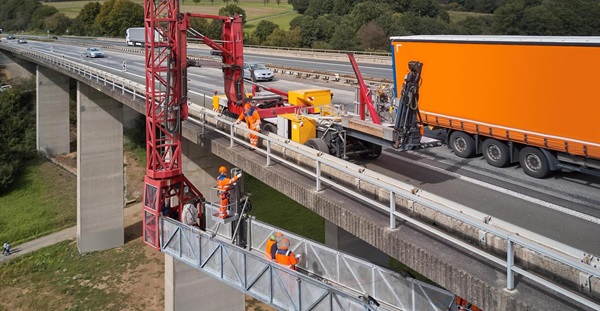Harnessing Infrastructure Digitization for Sustainable Asset Management
In the modern era, where technological advancements are rapidly shaping every aspect of our lives, it's essential to recognize the critical role of infrastructure digitization in fostering efficient asset management. Infrastructure, ranging from roads and bridges to utilities and transportation networks, form the backbone of societies worldwide, however as these structures age, maintaining and managing them becomes increasingly challenging. This is where digitization steps in, offering innovative solutions to ensure the longevity and sustainability of our infrastructure.
The Imperative of Infrastructure Digitization
Digitization involves the deployment of sensors and integration of technologies into various aspects of asset inspection, management, and maintenance, revolutionizing traditional approaches. By leveraging technologies such as Building Information Modeling (BIM), the Internet of Things (IoT), Machine Learning (ML), and Artificial Intelligence (AI) - infrastructure stakeholders can collect, analyze and utilize vast amounts of data to make informed decisions. For example, Arcadis has developed Intelligent Asset Insights (IAI) to manage pavement health across road networks. IAI is being used by agencies across Netherlands, US, UK, Belgium, and France to analyze video data to assess the condition and deterioration of pavements. IAI can also predict the future performance and maintenance needs of pavements and optimize the allocation of resources and budget for pavement maintenance while supporting lengthening its life. Arcadis’ Bridge Health solution is another example of using digitization to enhance infrastructure management. This solution uses drones to collect visual, acoustic, and sonar data combined with ML to analyze bridges and detect defects such as cracks, corrosion, or spalling. The solution can also prioritize the repair needs of bridges based on their severity and impact and provide recommendations for optimal maintenance strategies.
1. Real-time Monitoring and Maintenance:
Digitized infrastructure allows for real-time monitoring of asset conditions. Sensors embedded in bridges, roads, and utility systems can continuously collect data on factors like structural integrity, traffic flow and utility performance. This data provides insights into asset health, enabling proactive maintenance and minimizing the risk of unexpected failures.
2. Predictive Analytics:
Through the application of AI and machine learning algorithms, infrastructure owners and managers can predict potential asset failures before they occur. By analyzing historical data patterns and identifying early warning signs, predictive analytics empower decision-makers to schedule maintenance activities strategically, optimizing resource allocation and minimizing downtime.
3. Enhanced Safety and Resilience:
Digitization enhances the safety and resilience of infrastructure systems. For example, smart traffic management systems can dynamically adjust signal timings based on real-time traffic flow, reducing congestion and enhancing road safety. Similarly, IoT-enabled utility grids can detect anomalies and automatically reroute resources, mitigating the impact of disruptions and ensuring uninterrupted service delivery.
Driving Sustainable Asset Management
Infrastructure digitization not only improves operational efficiency but also supports sustainable asset management practices. By extending the life cycle of infrastructure assets, digitization contributes to environmental conservation and economic viability.
• Optimal Resource Utilization: By identifying maintenance needs precisely and scheduling interventions based on data-driven insights, infrastructure digitization minimizes resource wastage. This optimization extends the lifespan of assets, reducing the need for frequent replacements and conserving natural resources.
• Eco-friendly Infrastructure Design: Digital technologies facilitate the design and construction of eco-friendly infrastructure. Advanced modeling and simulation tools enable engineers and architects to optimize designs for energy efficiency, resilience to climate change, and minimal environmental impact. For example, digital twin technology allows for virtual testing of infrastructure designs, ensuring optimal performance before physical implementation.
• Improved Asset Performance: Digitization enhances asset performance through continuous monitoring and feedback loops. By tracking key performance indicators in real-time, infrastructure managers can identify opportunities for optimization and efficiency improvement. This proactive approach not only extends asset life but also reduces operational costs and enhances overall system performance.
Infrastructure digitization holds immense potential to revolutionize asset management practices and ensure the longevity and sustainability of our critical infrastructure systems. By harnessing the power of digital sensors and technologies, stakeholders can improve operational efficiency, enhance safety, and drive sustainable development. Realizing these benefits requires collaborative efforts from governments, industry players, and technology providers. Together, we can embrace the digital transformation of infrastructure and build a resilient, future-ready world.





